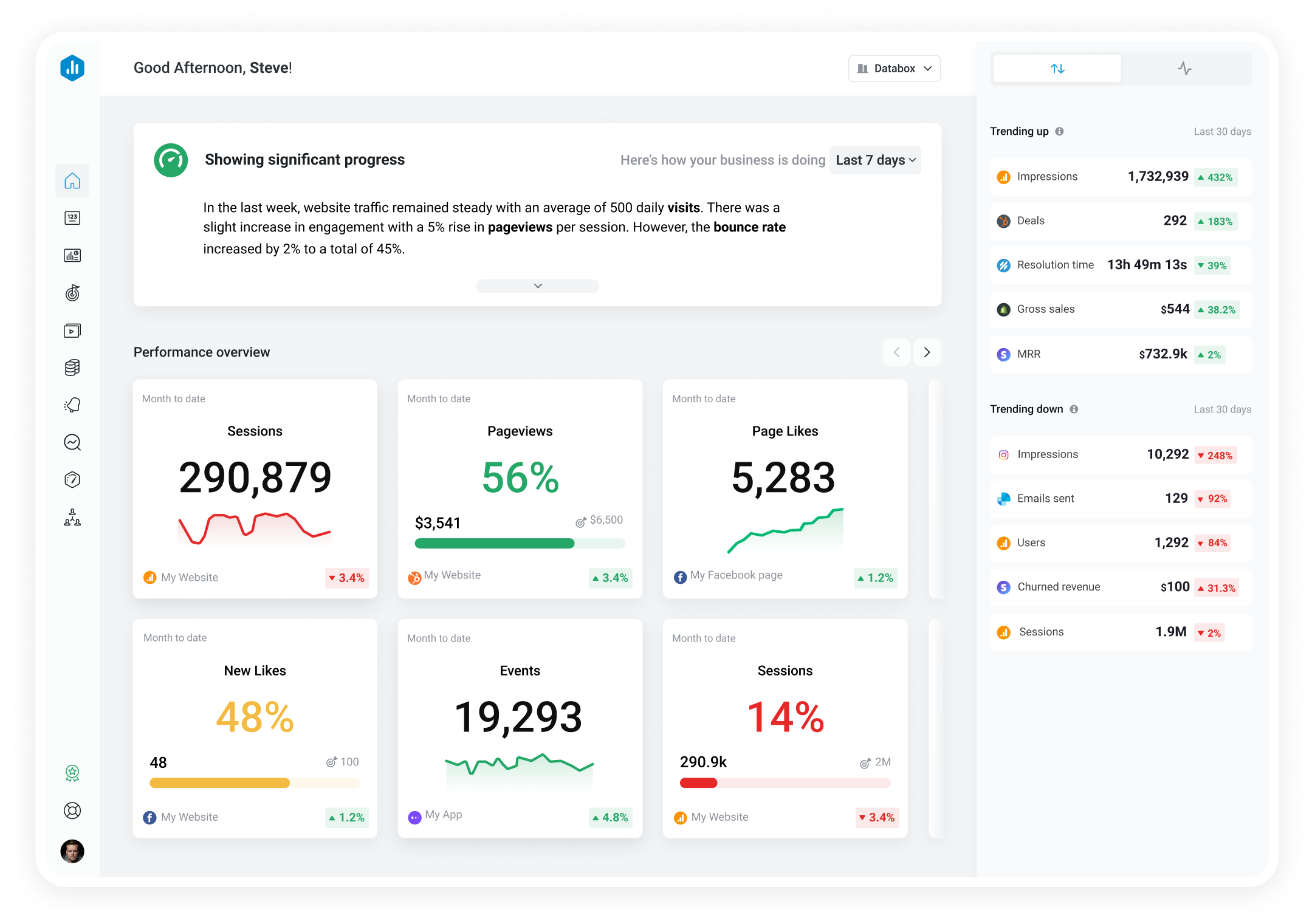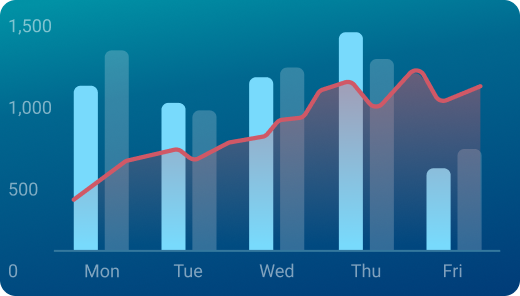Track all of your key business metrics from one screen
GET STARTED
 Google AdMob
Impressions RPM by Platform
Google AdMob
Impressions RPM by Platform Impressions RPM by platform is a metric that measures the revenue earned per thousand ad impressions on a specific mobile platform, such as Android or iOS. It helps to optimize ad placement and improve monetization strategies for each platform.
With Databox you can track all your metrics from various data sources in one place.

Used to show comparisons between values.
Databox is a business analytics software that allows you to track and visualize your most important metrics from any data source in one centralized platform.
To track Impressions RPM by Platform using Databox, follow these steps:
 Goals
Goals Scorecards
Scorecards Metric Digest
Metric Digest Metric Builder
Metric Builder Data Calculations
Data Calculations Performance Screen
Performance Screen